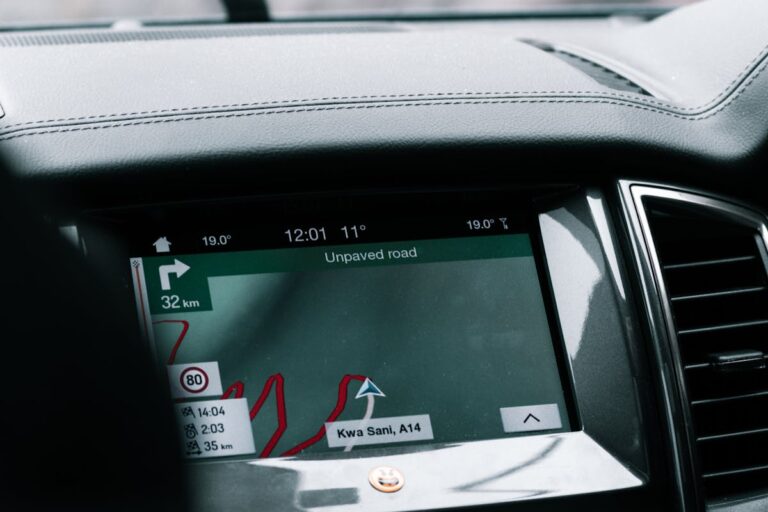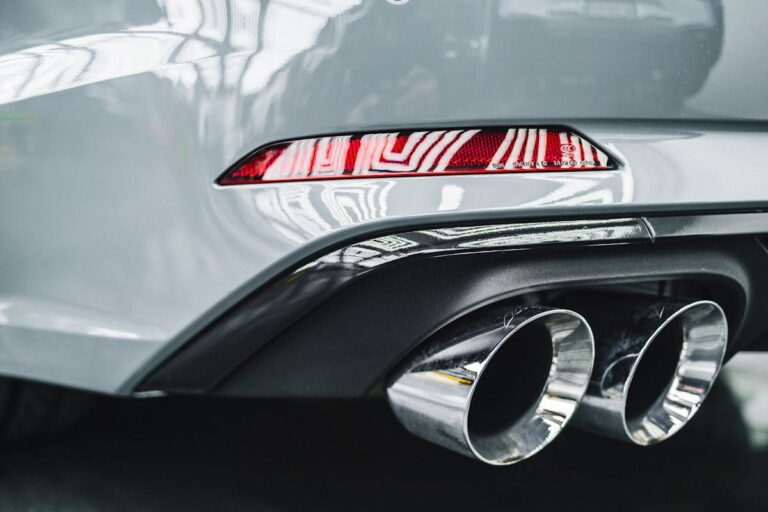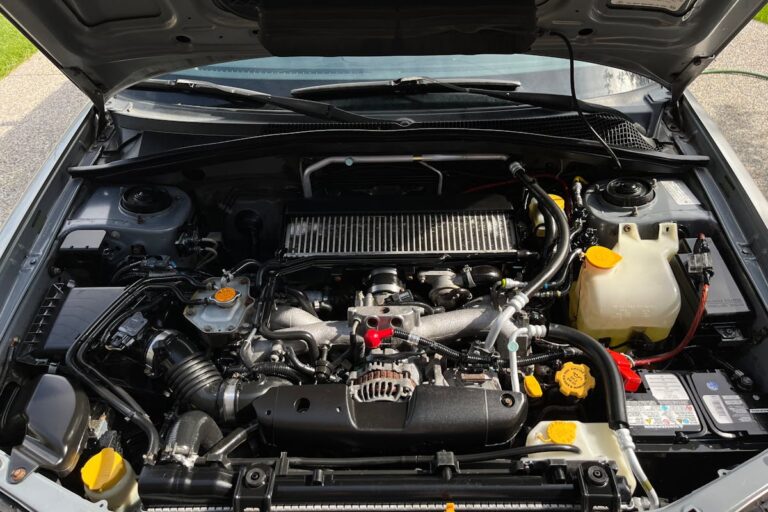Causes of Car Vibration
Car vibrations, while seemingly innocuous, can signify a multitude of underlying issues, ranging from tire imbalance to faulty engine mounts. As these vibrations can often be felt through the steering wheel or seats, they may not only disrupt the driving experience but also pose a potential safety risk. Understanding the various causes and early signs of car vibration, consequently, becomes critical in maintaining the ideal performance of your vehicle. In the following sections, we will explore these causes in detail to help you better diagnose and resolve any issues that may arise.
Unbalanced Car Tires
Have you ever wondered why your car trembles or shakes while driving? One of the primary reasons for this seemingly perplexing phenomenon can be traced back to unbalanced car tires.
Unbalanced tires are a result of uneven weight distribution around the tire’s circumference. This imbalance can be caused by a variety of factors, among which, tire pressure and tire tread are the most significant. Tire pressure directly influences the tire’s contact with the road surface. If the pressure is not uniformly distributed across the tire, it can lead to uneven wear and tear, resulting in an imbalance. The tire tread, the patterned surface of the tire, also plays an essential role. A worn-out or uneven tread can cause the tire to lose grip on the road, leading to vibrations while driving.
The vibrations resulting from unbalanced tires are not constant but increase with the speed of the vehicle. They are typically felt through the steering wheel and can cause decreased fuel efficiency, increased tire wear, and potential damage to the suspension system. Consequently, it is critical to maintain ideal tire pressure and regularly check tire tread for any signs of wear.
Worn Out Brake Pads
A vehicle’s brake pads play an essential role in ensuring safe and smooth driving. As these components are subjected to continuous stress and heat, they gradually wear out and thin over time, which may result in car vibrations.
The brake pad materials, typically comprising metallic, organic, or ceramic compounds, considerably influence the durability and performance of the pads. Metallic pads, while durable, tend to wear the rotors quickly and are noisier. Organic pads are quieter, but wear out faster. Ceramic pads offer a balance between durability and noise, but are more expensive.
When brake pads become excessively worn, the metal backing plate of the pad gets dangerously close to the brake rotor. This not only causes vibrations that can be felt in the brake pedal but also results in a grinding noise, compromising the vehicle’s stopping power and potentially causing rotor damage.
Regular brake system maintenance is crucial to prevent such issues. This includes routine inspections of brake pads for signs of wear, ensuring appropriate pad thickness, and timely replacement when necessary. By keeping on top of brake pad wear, drivers can maintain vehicle safety, reduce vibrations, and prolong the longevity of their brake system.
Damaged Transmission System
Your car’s transmission system serves a pivotal role in controlling the power generated by the engine. When this system is damaged, it can lead to noticeable vibrations while driving. The transmission system is responsible for transferring power from the engine to the wheels, and any disruption in this system can affect the smooth operation of the vehicle.
A common cause of transmission-related vibrations is low or dirty transmission fluid. The fluid is essential for lubricating the components and facilitating seamless gear shifting. If the fluid level is low or the fluid is contaminated, it can lead to harsh or erratic gear shifting, which can cause the car to vibrate.
Another potential cause of vibration is damage to the transmission gears. These gears must shift smoothly and in sync for the transmission to function properly. If a gear is damaged or worn out, it can disrupt the shifting process, leading to vibrations.
Moreover, a failing transmission mount, which supports the transmission and secures it to the vehicle’s chassis, can also cause vibrations. If the mount is damaged or worn, it can allow the transmission to move and vibrate while the car is in operation.
Malfunctioning Spark Plugs
While many drivers may overlook their importance, malfunctioning spark plugs can also be a significant cause of car vibrations. Spark plugs are essential components of an internal combustion engine, critical for igniting the air-fuel mixture in the engine cylinders. Different spark plug types, such as copper, platinum, and iridium, can affect engine performance and hence, vibrations.
A worn-out or damaged spark plug can disrupt the engine’s timing due to inconsistent firing, leading to an unbalance in the combustion process. This imbalance, in turn, results in vibrations that can be felt in the steering wheel, seats, and even floorboards of the vehicle.
Regular spark plug maintenance is important in preventing such issues. It includes periodic inspection for wear and tear, proper gapping, and timely replacement as per manufacturer’s recommendations. Improper maintenance can cause the spark plug to misfire, which not only leads to vibrations but also reduces engine efficiency and increases fuel consumption.

Faulty Engine Mounts
Faulty engine mounts present a significant factor in car vibrations, necessitating an extensive understanding of how to identify damaged mounts and their impact on vehicle performance. Engine mounts, integral components designed to secure the engine to the vehicle’s frame, can degrade or break over time, leading to notable operational issues. The ensuing discussion will focus on the identification process of these faulty mounts and explicate the consequent implications on the overall vehicle performance.
Identifying Damaged Mounts
Often, car vibrations can be traced back to damaged or faulty engine mounts. Engine mounts, or motor mounts, are essential components that secure the engine to the chassis, cushioning it from road shocks and engine vibrations. When these mounts are compromised, they can’t perform their job properly, leading to noticeable vibrations.
The process of identifying damaged mounts involves two key steps: mount inspection and vibration analysis. The former involves physically inspecting the mounts for visible signs of wear and damage, such as cracks, distortion, or hydraulic fluid leaks (in the case of hydraulic mounts). This requires a thorough understanding of the mount’s structure and material composition, as certain signs of damage might be subtle or hidden from view.
Vibration analysis, on the other hand, is a more complex procedure. It entails measuring and interpreting the vibration levels in the vehicle, particularly when the engine is running. Unusual vibration patterns often suggest a problem with the engine mounts. However, as engine vibrations can also be caused by other issues, such as engine imbalance or misalignment, vibration analysis should be combined with other diagnostic methods for a more accurate assessment.
Proper identification of damaged mounts is vital for rectifying car vibration issues, ensuring a smooth and safe ride.
Impact on Vehicle Performance
The repercussions of damaged engine mounts extend well beyond the noticeable car vibrations. Engine mounts play an essential role in maintaining engine stability, reducing vibrations, and consequently improving overall ride comfort. When these mounts are faulty, the engine is not properly secured, leading to instability which directly impacts the vehicle’s performance.
One key area affected is engine efficiency. With the engine being subject to constant shaking and displacement, it strains to perform effectively. This results in an increased fuel consumption, reduced power output, and slower acceleration; all of which compromise the engine’s efficiency.
Another impact is the deterioration of ride comfort. The engine’s excessive movement due to faulty mounts results in intense vibrations that are transferred to the vehicle’s body. In turn, these vibrations are felt by the passengers, leading to an uncomfortable and bumpy ride.
Furthermore, the constant motion of the engine can cause significant wear and tear on other components, such as the radiator, exhaust system, and transmission. This can lead to further mechanical issues and costly repairs. Therefore, maintaining the integrity of engine mounts is vital for both vehicle performance and ride comfort.
Misaligned Wheels
Misaligned wheels, an often-overlooked source of vehicular vibration, require careful identification and remediation. The ensuing discussion will first focus on the detection of wheel misalignment, including the signs, symptoms, and diagnostic techniques. Subsequently, the discourse will shift towards the varied solutions for misalignment, detailing both preventative measures and corrective procedures.
Identifying Wheel Misalignment
A significant percentage of motorists experience the discomfort of car vibrations at some point, a symptom often indicative of wheel misalignment. This problem often occurs due to the vehicle’s suspension components wearing out, causing the wheels to move out of their originally set position. Identifying this issue requires a detailed wheel inspection and the use of specialized alignment tools.
During a wheel inspection, specific signs hint at potential misalignment. These include:
- Uneven or rapid tire wear: Misalignment often leads to abnormal tire wear patterns. If the tires wear out faster on one side compared to the other, it’s a clear signal of wheel misalignment.
- Vehicle pulling to one side: If the car seems to drift or pull towards one side while driving on a straight, even road, it indicates the wheels are not properly aligned.
- Steering wheel vibration: A vibrating steering wheel, especially at higher speeds, often signifies wheel misalignment.
Using advanced alignment tools, technicians can measure the wheel alignment angles to determine if the wheels are parallel to each other and perpendicular to the ground. This analysis provides detailed insights into the severity and nature of the misalignment, paving the way for appropriate solutions.
Solutions for Misalignment
Addressing the issue of wheel misalignment promptly can greatly reduce the distressing vibrations in a vehicle. An efficient way to rectify misaligned wheels is through precise wheel adjustments. This involves adjusting the angles of the wheels to the car manufacturer’s specifications to maximize tire life, vehicle stability, and fuel efficiency.
Wheel adjustments must be undertaken by trained professionals using specialized alignment tools. The process generally involves adjusting three main areas: camber, toe, and caster. The camber angle affects the tilt of the tire, which, if improperly aligned, can lead to excessive tire wear and vibrations. The toe alignment is concerned with the angle at which the tires turn inward or outward. Incorrect toe alignment can cause the vehicle to pull to one side, potentially leading to vibrations. Finally, the caster angle affects the vehicle’s stability and steering axis, and incorrect caster alignment may result in vibration and swaying.
Problematic Axles and Driveshafts
Experiencing car vibrations often leads us to inspecting axles and driveshafts, components essential for the proper functioning of any vehicle. These elements are responsible for transferring power from the engine to the wheels, and any damage or misalignment can cause noticeable vibrations.
Regular axle inspection is highly recommended to help identify potential issues early. This involves looking for signs of wear, damage, or irregularities such as dents, cracks, or rust. Driveshaft maintenance is equally important, as a bent or unbalanced driveshaft can greatly impact vehicle performance.
When dealing with problematic axles and driveshafts, consider the following:
- Look for any physical damage on the axle. Cracks or bends could be a sign of serious issues.
- Listen for unusual noises while driving. Clicking or humming sounds might indicate a problem with the driveshaft.
- Check the condition of the CV joints. Damaged or worn out CV joints can cause vibrations during acceleration.
Damaged Power Steering System
The power steering system, an essential component of any vehicle, can also be a source of car vibrations if damaged or malfunctioning. This system facilitates the maneuverability of the car by reducing the physical effort required to steer the wheels, especially when the car is stationary. Power steering issues can be caused by a variety of factors, each contributing to the overall performance and stability of the vehicle.
One common cause of power steering issues is fluid leaks. The power steering system operates using hydraulic pressure, which is created by a special fluid. If this fluid leaks, the system can lose pressure, diminishing its effectiveness and causing vibrations. Fluid leaks can be identified by low fluid levels in the reservoir, a whining noise when steering, or visible leaks underneath the vehicle.
Another cause is a malfunctioning power steering pump. The pump’s role is to circulate the fluid under high pressure. If it gets damaged, it may cause irregularities in fluid pressure, leading to vibrations while steering. Regular inspection and timely maintenance are crucial to prevent power steering issues and guarantee a smooth driving experience. Signs of a faulty pump may include difficulty in steering, unusual noises, or fluid leaks.
Frequently Asked Questions
What Role Does Regular Vehicle Maintenance Play in Preventing Car Vibrations?
Regular vehicle maintenance particularly reduces car vibrations. Ensuring tire balance rectifies uneven distribution of mass. Additionally, checking engine mounts can prevent vibrations from engine operation transferring to the vehicle, promoting a smoother ride.
Can Poor Quality Fuel Cause Car Vibrations?
Poor fuel quality can indeed negatively affect engine performance, potentially causing vibrations. Impurities in low-quality fuel can lead to incomplete combustion, resulting in engine misfire, which manifests as noticeable shaking or vibration.
How Does Weather Impact the Likelihood of Car Vibrations?
Weather, specifically temperature effects and humidity levels, can impact a vehicle’s performance. Cold temperatures can thicken fluids, causing poor lubrication, while high humidity might lead to condensation in the fuel system, both potentially causing car vibrations.
Does Aggressive Driving Increase the Chances of Car Vibrations?
Aggressive driving, characterized by aggressive acceleration and sudden braking, can indeed increase the likelihood of vehicle vibrations. This is due to excessive stress placed on the vehicle’s mechanical components, inducing wear and potential misalignment.
Can a Faulty Exhaust System Cause the Car to Vibrate?
Yes, a faulty exhaust system can indeed cause the car to vibrate. This can occur due to exhaust leaks or mounting issues, which create abnormal pressure conditions or structural imbalances, leading to noticeable vibrations.






